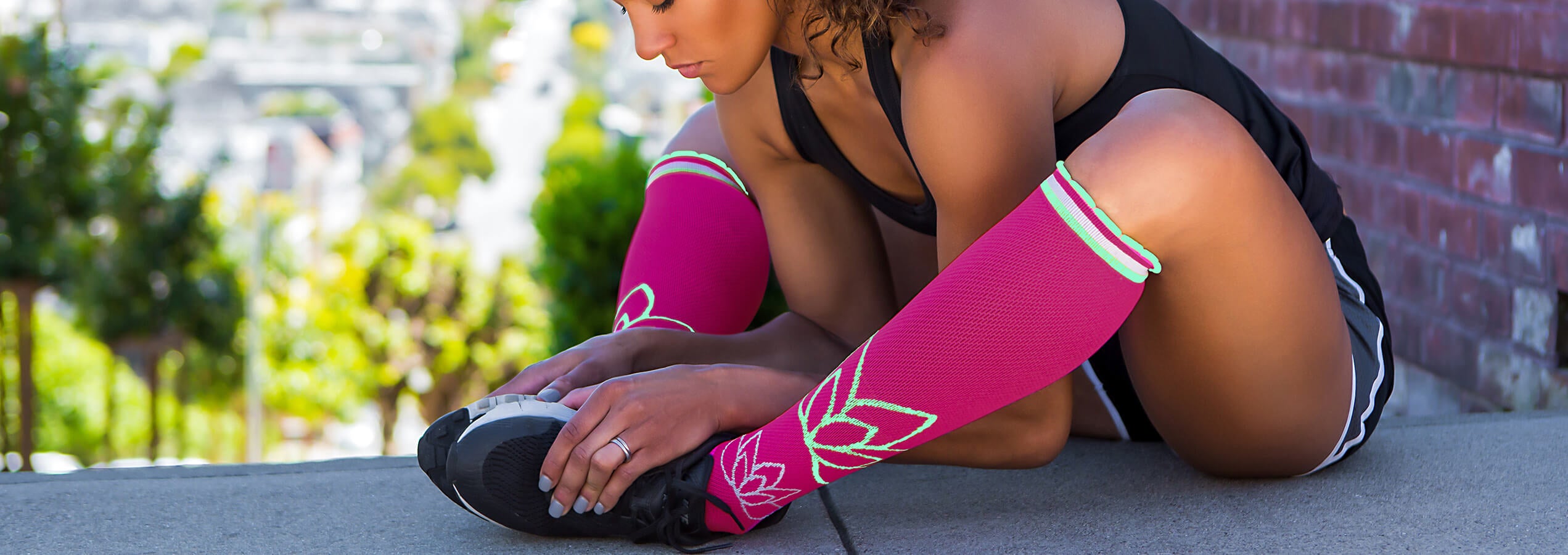Don’t we all wish we could keep our perfect teenage youthful legs frozen in time? Free of all the scars from life or signs of aging, like spider and varicose veins? It would be nice, but sadly it’s not possible. If you’re focused on living a happy and healthy life and want to look as young as you feel, there are some things you can do to keep your legs and their veins healthy.
- If you are overweight, try to lose it. This will greatly improve your blood flow and ease the pressure the extra weight places on your veins.
- Avoid wearing tight clothes on your bottom half, as this can increase the severity of your varicose veins.
- Don’t wear high heels for long periods. (Lower heeled shoes can help tone your calf muscles and improve circulation.)
- Wear compression socks. They keep blood from pooling in your veins and will decrease swelling in your legs, ankles and feet.
Here’s one of the most important things to remember. Vein issues can be much more serious than spider and varicose veins. The discomfort, pain and swelling that can occur when we don’t take proactive steps to promote vein health can cause small blood clots to form— and even put us at risk of developing a life-threatening blood clot or DVT (Deep Vein Thrombosis).
The symptoms of DVTs resemble those of other illnesses. A DVT in the calf will ache and worsen over several days. In addition to pain, you could have warmth and swelling in the area around or below the clot. A clot in the thigh or where the thigh and abdomen meet causes similar symptoms. The skin may redden or turn a shade of blue. If you experience any of these symptoms, it’s important to see a doctor.
Blood clots affect many people from all walks of life. Hospital discharge data and studies show that DVT occurrences differ by race— with African Americans having the highest rates, followed by Caucasians, and then Hispanics and Asians. The overall incidence of DVT is 30 percent to 60 percent higher in African Americans than in Caucasians. This disparity is also true across age groups and gender lines.
Tragically, many lives are lost because public awareness of DVTs is low. Many studies have shown that fewer than 1 in 4 people know about blood clots, including their signs and symptoms. Dr. Howard LeWine, M.D., Chief Medical Editor, Harvard Health Publications wrote in 2011 that blood clots pose an immediate and long-term health hazard and that DVTs are at the top of the list of under-the-radar health conditions, putting more than 250,000 Americans in the hospital each year. He also noted the two biggest worries for someone with a DVT are post-phlebitis syndrome and a pulmonary embolism.
Post-thrombotic (postphlebitic) syndrome (POTS) occurs when a blood clot permanently damages the vein it’s lodged in, causing persistent leg pain, swelling, darkened skin and sometimes skin ulcers that are hard to heal. Up to 40 percent of people with a DVT develop POTS.
A pulmonary embolism occurs when a piece of a blood clot breaks away, travels through the bloodstream and becomes lodged in the lungs. Almost all DVT-related deaths are due to a pulmonary embolism.
Preventing vein issues is definitely preferable to treatment…so take all the steps you can to stay healthy and show your legs the love they deserve.







